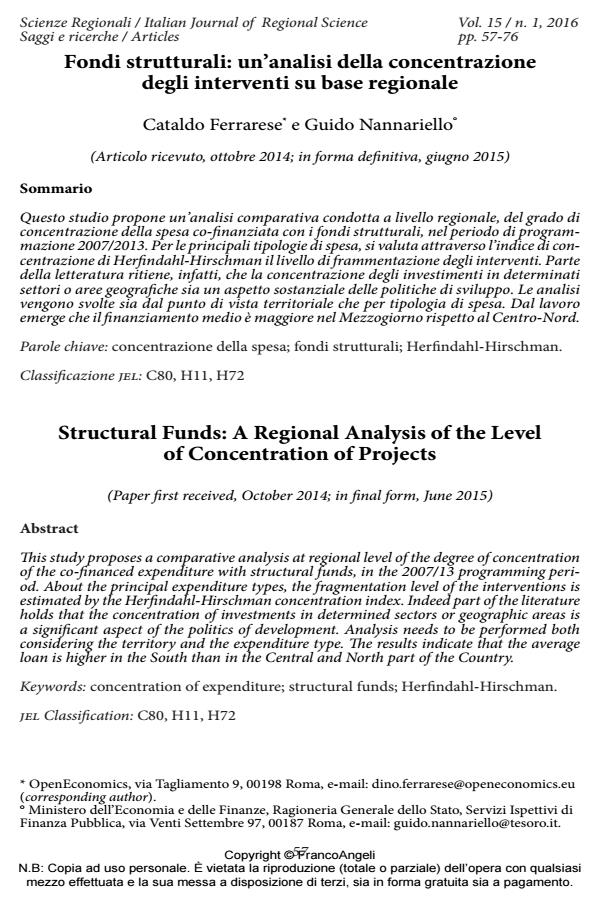Structural Funds: A Regional Analysis of the Level of Concentration of Projects
Journal title SCIENZE REGIONALI
Author/s Cataldo Ferrarese, Guido Nannariello
Publishing Year 2016 Issue 2016/1
Language Italian Pages 20 P. 57-76 File size 217 KB
DOI 10.3280/SCRE2016-001003
DOI is like a bar code for intellectual property: to have more infomation
click here
Below, you can see the article first page
If you want to buy this article in PDF format, you can do it, following the instructions to buy download credits

FrancoAngeli is member of Publishers International Linking Association, Inc (PILA), a not-for-profit association which run the CrossRef service enabling links to and from online scholarly content.
This study proposes a comparative analysis at regional level of the degree of concentration of the co-financed expenditure with structural funds, in the 2007/13 programming period. About the principal expenditure types, the fragmentation level of the interventions is estimated by the Herfindahl-Hirschman concentration index. Indeed part of the literature holds that the concentration of investments in determined sectors or geographic areas is a significant aspect of the politics of development. Analysis needs to be performed both considering the territory and the expenditure type. The results indicate that the average loan is higher in the South than in the Central and North part of the Country.
Keywords: Concentration of expenditure; structural funds; Herfindahl-Hirschman.
Jel codes: C80, H11, H72
Cataldo Ferrarese, Guido Nannariello, Fondi strutturali: un’analisi della concentrazione degli interventi su base regionale in "SCIENZE REGIONALI " 1/2016, pp 57-76, DOI: 10.3280/SCRE2016-001003